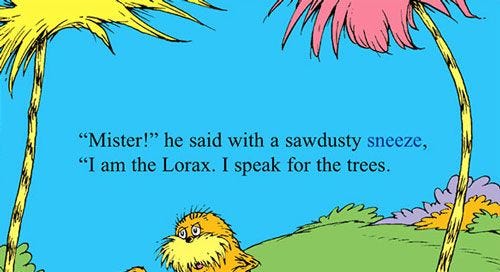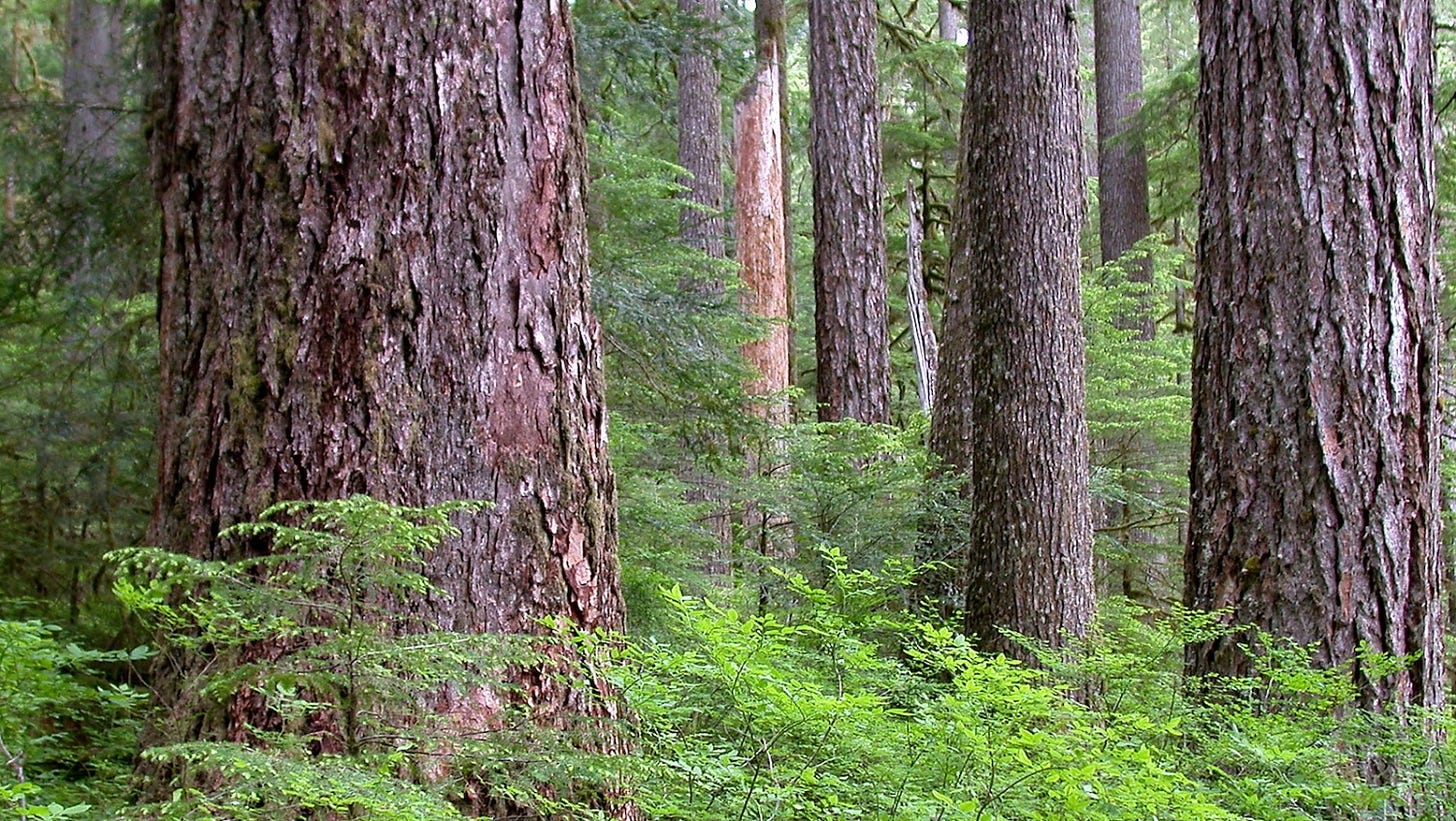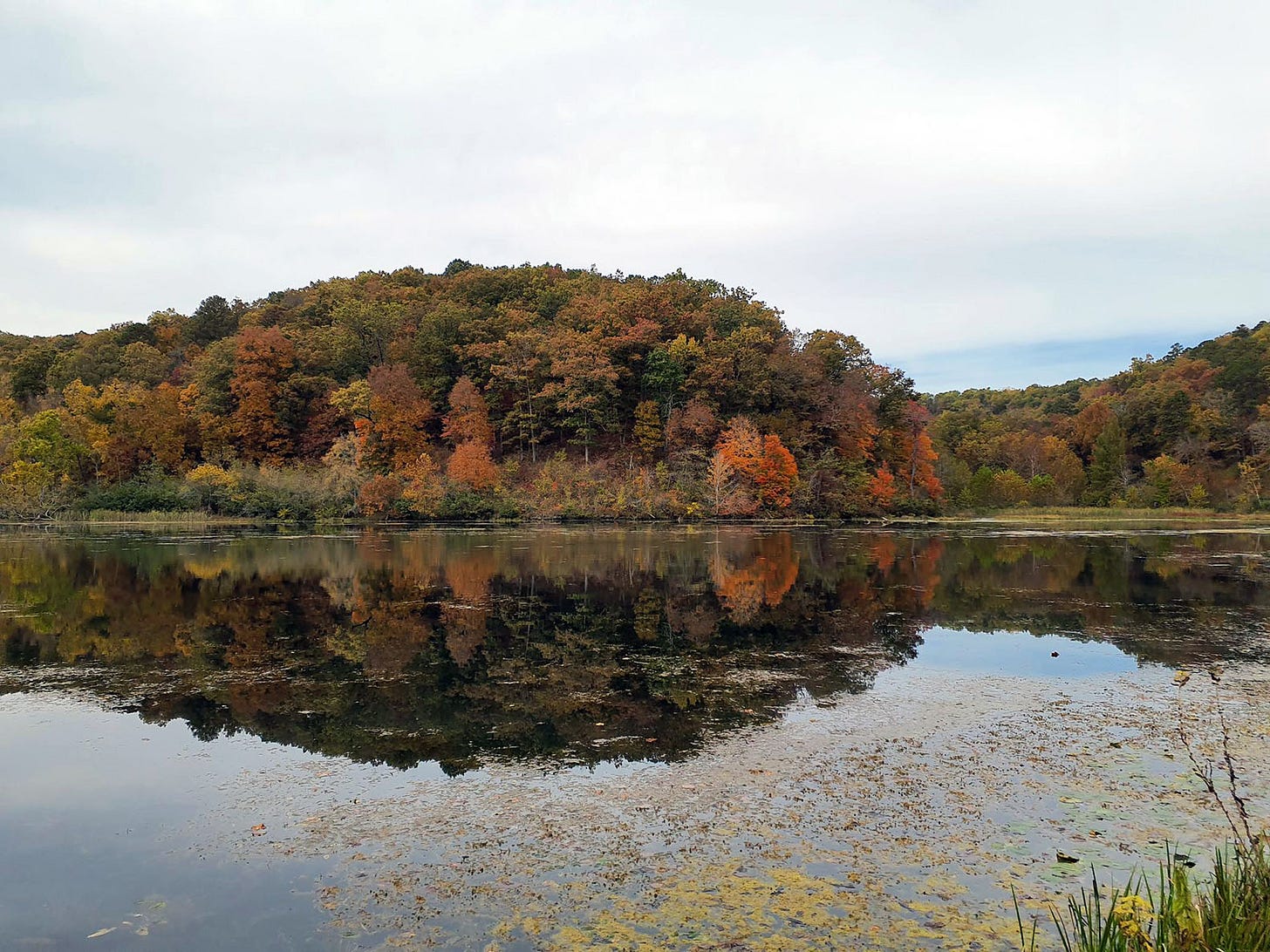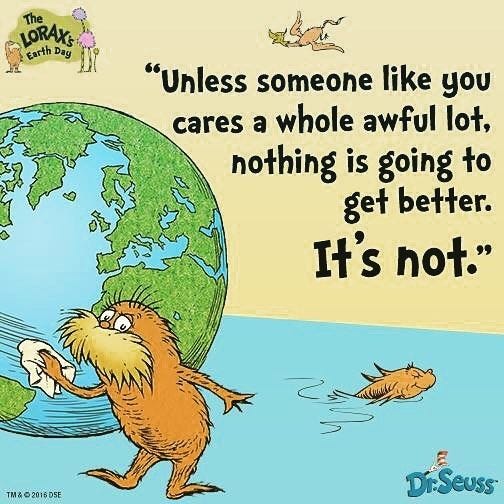We all remember Dr. Seuss’s 1971 book, The Lorax, and the warning it contained to protect and care for our environment.
As the dangers of climate change continue to manifest around us and the Earth’s future grows increasingly precarious, we should be paying particularly close attention to that warning, yet in a Gallup poll conducted just before the 2024 presidential election, prospective voters ranked climate change second to last in level of importance out of 22 issues that would influence their choice for president. Only one in five participants felt climate change was “extremely important,” and one in four didn’t feel it was important at all.
Today, no doubt can exist that the man our country elected to office reflects those priorities. But perhaps all of the harm he is seeking to inflict on our environment may be precisely what we need in order to refocus our attention on protecting our planet and remembering the Lorax’s warning.
In honor of two environment-centric holidays that were celebrated this week, Earth Day (April 22nd) and Arbor Day (April 25th), I’d like to shine a spotlight on a few of the ways the Trump administration is working to cause irreversible damage to our planet.
Deforestation of Federal Lands
On March 1st, Trump signed an executive order directly attacking the Lorax’s responsibility—the trees—by calling on the Bureau of Land Management (BLM) and U.S. Forest Service (USFS) to increase logging on federal lands. On April 3rd, in response to the executive order, Secretary of Agriculture Brooke Rollins (USFS falls under the Department of Agriculture) issued a memo designating an “Emergency Situation Determination” for the purpose of “increasing timber production.” The emergency designation covers 176,000 square miles of federal land, which amounts to 59% of all USFS lands. To meet Rollin’s new directive, USFS officials were ordered to increase the amount of timber offered to logging companies over the next four to five years by 25%.
Proponents of the order—the logging industry—claim that increased logging will help reduce threats of wildfire, but science says otherwise. According to Dr. Chad Hanson, ecologist and co-founder of the John Muir Project, “Logging doesn’t curb fires, it intensifies fires. Trump falsely claims that more logging will curb wildfires and protect communities, but there’s an overwhelming amount of scientific evidence showing the exact opposite. The more trees you remove, the faster wildfire flames sweep through the forest. It gives less time for people to evacuate and less time for first responders to react.”
“Nobody should be fooled into thinking that this secretarial order or Trump’s executive order are anything more than a handout to the industry to basically log-baby-log on our public lands,” warns Randi Spivak, the public lands policy director for the Center for Biological Diversity. “Nobody should be fooled that this has anything to do with wildfires.”
“This is all about helping the timber industry,” Blaine Miller-McFeeley of the environmental group Earthjustice confirms. “It’s not looking at what will protect communities. It’s about the number of board feet, the number of trees you are pulling down.”
In addition to worsening wildfires, increased logging on federal lands will lead to higher levels of carbon in the atmosphere. Over the course of its lifetime, a single tree can store up to 28,000 pounds of carbon dioxide—equivalent to the emission cost of powering one to two American homes for an entire year. Deforestation not only deprives us of these powerful carbon storage resources, but felling trees actually emits three to five times more carbon dioxide into the air per acre than wildfires. Spivak adds that increased logging would put hundreds of threatened and endangered species at even greater risk, including animals like grizzly bears, wild salmon, salamanders, and spotted owls.
Not to mention, the increased logging would cause Americans to lose access to many of our beautiful federally protected lands.
The Department of the Interior and DOGE
According to its mission statement, the Department of the Interior (DOI) “protects and manages the Nation’s natural resources and cultural heritage; provides scientific and other information about those resources; and honors its trust responsibilities or special commitments to American Indians, Alaska Natives, Native Hawaiians, and affiliated Island Communities.” Journalist Wes Siler explains that the DOI oversees “the National Park Service, the Bureau of Indian Affairs, Bureau of Indian Education, Bureau of Land Management, Bureau of Ocean Energy Management, Bureau of Reclamation, Bureau of Safety and Environmental Enforcement, Bureau of Trust Funds Administration, Office of Surface Mining Reclamation and Enforcement, U.S. Fish and Wildlife Service, and the U.S. Geological Survey,” and that “its operations cover 20 percent of the nation’s total land area.”
Elon Musk’s DOGE (Department of Government Efficiency) officially infiltrated the DOI last month and, as of April 17th, has since apparently fully taken it over, according to an order issued by Secretary of the Interior Doug Burgum. In the order, Secretary Burgum cedes full control and authority over the Interior Department to DOGE operative Tyler Hassen and directs Hassen to “effectuate the consolidation, unification and optimization of administrative functions within the Department of the Interior in order to achieve effectiveness, accountability and cost savings for the American taxpayer.” In other words, “Elon Musk is now effectively in charge of America’s public lands,” explains Jennifer Rokala, executive director at the Center for Western Priorities.
While Secretary Burgum was nominated to his position and confirmed by the Senate, Tyler Hassen has no government experience, was not elected, nominated, nor confirmed for his position, or any position whatsoever, and all that is known about him is that he is a former oil and gas executive and pals with Elon Musk. And yet, as Siler writes, “Hassen is now responsible for 70,000 employees, the administration of numerous international treaties, the welfare of 574 Native American Tribes, 433 national park sites, over 500 million acres of public lands, 700 million acres of subsurface minerals, and 3.2 billion acres of the Outer Continental Shelf.”
It’s only been a week since Secretary Burgum handed over the reins to Hassen, and already he is making concerning moves. On Wednesday, the DOI announced it would fast-track new mining and drilling efforts on federal lands by slashing the lengths of required environmental review processes; the time period for standard environmental reviews will be cut down from one year to a shocking 14 days, and more complicated impact statement reviews, which typically take about two years, will be finished within 28 days. In other words, no serious environmental reviews will be conducted at all.
And yet just last week, the DOI acted antithetically to this guidance when it halted production of an offshore wind project that would power more than half a million households. According to Secretary Burgum (who is now presumably just the mouthpiece of the DOI after surrendering all of his power to DOGE), the pause was needed because “approval for the project was rushed through by the prior Administration without sufficient analysis or consultation among the relevant agencies as relates to the potential effects from the Project.” So, a project that could power 500,000 homes with clean energy that had already undergone the required environmental review process was “rushed” and therefore couldn’t continue, but new projects that will not use clean energy can be approved with barely a passing glance. Right.
The threats posed by logging, mining, and drilling on our federal lands represent only a small fraction of the damage this administration is seeking to inflict on our planet. Below, I have compiled a list of a few of the other more significant actions the administration has taken or threatened that would further damage the environment (investigative journalism by the New York Times was hugely instrumental to my ability to compile this list). You can click on any bullet point to learn more about a given topic. Please note that this list is by no means exhaustive.
The environment and the future of our planet may not feel incredibly important in our day-to-day lives, especially as we stress over how Trump’s irrational tariffs are hurting the economy and raising prices, as we watch this administration brazenly disobey court orders and make a mockery of our Constitution, and while innocent people remain trapped in a foreign gulag without access to basic due process. But as another Earth Day and another Arbor Day pass us by, we must remember to thank the Earth for everything it provides for us, and to take care of it so that it can continue to provide for future generations.
As the Lorax said, “Unless someone like you cares a whole awful lot, nothing is going to get better. It’s not.”
Major actions by the Trump administration affecting the environment since Inauguration Day:
· January 20th (Inauguration Day)
o Withdrew from the Paris Climate Accord (again)
o Ended subsidies for electric vehicles
o Ended federal approvals for windfarms
o Opened up fragile wilderness in Alaska to oil drilling and mining
· February 5th
o Terminated all environmental justice programs aimed at protecting poor communities who suffer from disproportionate exposure to pollutants
o Ended climate standards on household appliances
· February 26th
o Called on the EPA to rewrite the belief underpinning almost all climate change-based regulations—that greenhouse gases are a danger to public health and welfare
· March 11th
o Promised to eliminate all EPA environmental justice offices
· March 12th
o Repealed 31 fundamental, life-saving pollution regulations
o Canceled $20 billion in already approved climate grants
· March 17th
o Moved to eliminate the EPA’s Office of Research and Development
· April 8th
o Slashed funding and staff for an imperative climate report, the National Climate Assessment
o Attacked states’ independent efforts to combat climate change
o Expanded the mining and burning of coal
· April 9th
o Cut $4 million in funding from Princeton earmarked for climate change research
o Repealed a shower head regulation put in place to conserve water
· April 10th
o Eliminated a 15-year-old program that requires industrial polluters to disclose levels of greenhouse gas emissions
· April 11th
o Called for the elimination of NOAA’s scientific research division
· April 16th
o Redefined a term in the Endangered Species Act, effectively gutting all meaningful protections for endangered species
· April 17th
o Opened up the Pacific Islands Heritage Marine National Monument site, one of the world’s largest ocean preserves, to commercial fishing
o Directed the Commerce Department to loosen regulations on the fishing industry









Thank you for writing this informative article, Breah. I look forward to reading more from you.
Ellen Gailans, Mequon, WI ( from your old neighborhood on Courtland Dr).